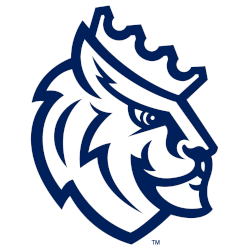Val Walchak
West Chester ‘66
National Hall of Fame ‘99
High school coach
Umpire and administrator
In 1972, I was teaching and coaching at Haverford High School in Pennsylvania. Title IX wasn’t on the radar. It took us a good eight years before we really began to consider the potential impact. We went onto an hourly pay scale for coaches, and the men’s [pay] was so much higher, because they had so many more games. They started getting paid time and a half if we scheduled them for night or Saturday games. The pay, eventually, was the thing that drove us to explore Title IX. I was athletic director at the time, and the men’s coaches were being paid for postseason play, while one of the women’s coaches wasn’t. So she called up the ACLU. It was very interesting when we went to arbitration how quickly everything as resolved. Once that happened, I had calls from coaches and athletic directors all over the whole area. This was in the early 1980s.
With the men, the coaches just threw all the equipment and the uniforms in bags to be refurbished at the end of the season. I had to get the coaches to encourage the girls to wash and repair their uniforms before they returned them. One of the responses [from the school district] was, “Well, that’s not so strange. Girls know how to sew and wash things.” We just started laughing hysterically. And the reasons we didn’t have night games was because they were “protecting” the girls from coming out at night. I said, “Well, how about the cheerleaders? They come out for the night games for football and boys basketball.”
It takes a long time to get things right. You have to be persistent. I like to see women be strong enough to step up make a stand about what their rights are. There still seems to be a reticence about that — and there are consequences of those who step up — but it is worth it. I loved my teaching and coaching there at Haverford. It was family and home to me. But there were some things that needed to be improved. When Time had [Penn State’s] Karen Pesto, who played at Haverford, on the cover (“Women in Sports,” June 26, 1978), I framed it. When I moved into the athletic director’s position, sometimes it would be really hard [to push for equality]. But I looked at that picture of Karen, and I thought, “Oh no. This can’t be.”
Kelly Amonte Hiller
Maryland ‘96
National Hall of Fame nominee ‘12
Team USA, 1997-2005
Northwestern University head coach, 2002-present
I can remember wanting to play sports when I was 5 or 6 years old. Softball wasn’t available, so I had to play Little League baseball. There was no girls’ ice hockey, so I played with the boys. As I got older, the opportunities became more prevalent. I feel like with my age group, sports were really emerging, and all the work that people put in before me to create those opportunities were really starting to pay off.
Seeing the opportunities my brother [future NHL All-Star Tony Amonte] got as a student-athlete, he was really courted. That was the standard I set, and that was one of the big reasons why I chose Maryland — because Cindy Timchal set the same tone. That was really important to me, to be taken seriously.
It’s such an important piece of legislation for female athletes. Initially it provides the opportunity. I try to get involved at the national level with bettering all areas of the sport. [Media coverage] is something that I’m really focused on. I try to aid in getting our sport on TV as much as possible, with the NCAA championship being on ESPN for the first time this year. I try to focus, as a coach, on the smallest details, because I know it’s the smallest details that affect the players’ experience — like the Big Ten Network and how amazing that is for our conference, our school and our sport. Or something as small as, “This is the right type of meal that we want to get these girls get so they feel special — just as special as a male athlete. And they feel like they can achieve anything when they walk on the field.” That’s my goal, to provide that environment so that they can play fearless.
I don’t think it’s any secret Northwestern added lacrosse because of Title IX. The level of support that we have now is just unbelievable. We’re viewed in the same light as men’s basketball or football, and that’s really special.


























































